In the global battle against climate change and to be more sustainable, the quest for energy efficiency has taken centre-stage. The focus on sustainability is an increasing emphasis on humanity’s finite resources and the effect of our energy-consumption habits on the world around us. This heightened awareness is leading to a radical rethinking of how energy is consumed and saved, at home and in our daily lives.
This is where smart home technologies come in: by harnessing the power of connection, automation and design, smart home systems promise to use energy far more efficiently. What’s more, smart home technologies are not just a way for households to save on their energy bills, they are also at the leading edge of the broader movement towards environmental sustainability.
This article sheds light on how smart technology influences houses and explains how smart home innovation is creating the path to a future of significant energy saving, helping to preserve our planet by minimising carbon footprints. Smart homes rely on gadgets, from smart thermostats with self-regulating temperature control depending on occupancy to smart lighting systems that automatically dim when people are not in a room or are automatically switched off when nobody is present. These gadgets and the innovative tech that lies behind them illustrate a number of ways we can achieve a greener and a more sustainable world filled with smart homes.
The evolution of smart home technology
Smart home technology had early predecessors in the home automation work of the late 20th century. Early systems were crude, with the primary focus on home security and control of home functions such as lights and appliances with timers and remote controls. They were a precursor to the connected, smart spaces of today.
There is a real inflection point that occurred with smart homes when the internet and wireless evolved. Wi-Fi became a thing and broadband became available, as did short range connectivity alternatives such as Zigbee and Z-Wave. All these developments allowed devices to talk to others, not just within the home, but beyond it.
The availability of user-friendly smartphone interfaces and mobile applications also helped transform users’ interactions with their home environments. Much of the data provided by smart home control systems could be monitored by the homeowners remotely, regardless of their location, in nearreal-time.
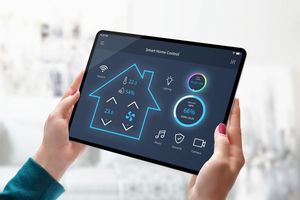
Energy efficiency takes centre stage
As environmental worries increased, the smart home began to focus on energy usage. New products such as smart thermostats that learn owners’ habits and automatically adjust heating and cooling depending on energy use, and smart lighting systems that use low-energy LED bulbs with automated control began to dominate the smart home discourse. Such solutions offered convenience while at the same time significantly reducing energy usage and associated costs.
The current state and adoption
As smart home technology begins its next phase of mass adoption, driven by energy savings, home security and household convenience, the market is flooded with an array of smart devices, ranging from energy monitors to automated blinds, and including smart appliances that can learn from their users’ energy specifications to make more energy saving adjustments, while utilising better energy efficiency along the way. The addition of artificial intelligence and machine learning to smart energy systems has significantly improved their ability to learn and then adjust their energy savings based on a home’s needs.
As consumers become increasingly aware of the importance of living a life that doesn’t hurt the planet, a demand for smart home technology has also materialised; energy efficiency is achievable and cost-effective, ultimately helping to conserve and utilise an energy supply that does not harm the environment. In other words, companies now have reason to innovate.
And in the future, as smart home technology advances to increase efficiency, we will see a wave of new smart homes that will truly define sustainable living, bringing us one step closer to global environmental targets.
Definition of energy efficiency in smart homes
Energy efficiency in the context of the smart home addresses the use of energy to perform different household functions in an optimal way, minimising the overall energy consumption used to support those functions, without foregoing comfort or convenience. In other words, energy efficiency is not simply about using less energy, it relates to the smart application of technology to ensure that energy is used in an optimal and efficient way. One of the most pressing contemporary challenges of our planet is the appraisal of how current modes of energy production and usage are affecting the environment, the concept of energy efficiency holds an immense global significance and relevance. Energy efficiency in smart homes represents the usage of advanced technologies to monitor, control and manage the energy consumption of appliances and systems in order to provide a sustainable living environment.
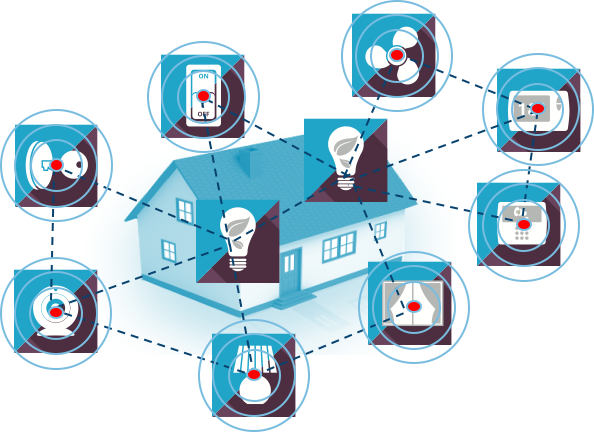
How smart homes achieve energy efficiency
Energy use is further reduced through automation, monitoring and control systems intended to work together in smart homes, which can also use information technology – such as being able to access your home’s control system from your phone – to reduce consumption. Here are some ways this is achieved:
- Automation: Smart homes utilise automation to manage energy consumption proactively. For example, smart thermostats can automatically adjust the heating and cooling of a home based on the time of day, occupancy patterns, and even weather forecasts. Similarly, smart lighting systems can turn off lights in unoccupied rooms or adjust brightness based on the natural light available, thus saving energy.
- Monitoring: The ability to monitor energy usage in real-time is a cornerstone of smart home energy efficiency. Homeowners can use apps to track the energy consumption of various devices and appliances. This visibility enables users to identify patterns of high usage and take steps to mitigate waste, such as adjusting the settings of energy-hungry devices or scheduling their operation during off-peak hours.
- Control: Smart homes provide unparalleled control over home systems and appliances, even remotely. Homeowners can use smartphones or voice commands to control lighting, heating, cooling and appliances, allowing for on-the-fly adjustments to reduce energy use. For instance, turning off heating in an empty home or starting a dishwasher during off-peak energy hours can lead to significant savings.
The role of IoT devices in enhancing energy efficiency
Thanks to the Internet of Things (IoT), smart homes are becoming more energy efficient. IoT – or Internet of Things – refers to devices that are connected to each other and to the internet; when they work together, they can offer levels of interactivity and control never before possible. The IoT is comprised of various devices – smart meters, smart thermostats and energy-saving smart appliances – that can communicate with and control each other and integrate with other devices in the home and beyond.
IoT devices contribute to energy efficiency by:
- Collecting data: They continuously gather data on energy usage, environmental conditions and user behaviour. This data is crucial for understanding and optimising energy use patterns.
- Learning and adapting: Many smart home devices are equipped with AI and machine learning capabilities, allowing them to learn from user habits and adjust their operations to maximise efficiency. For example, a smart thermostat can learn the preferred temperature of the household and adjust itself to maintain that temperature in the most energy-efficient way possible.
- Integrating systems: IoT devices can integrate various home systems, such as heating, ventilation and air conditioning (HVAC), lighting and security, into a cohesive, energy-efficient operation. This integration ensures that all systems are working together in the most energy-efficient manner, reducing redundancy and waste.
Key components of a smart energy-efficient home
Building a smart eco-home involves harnessing a number of components designed to work together to minimise energy consumption and maximise sustainability, both saving homeowners money on their energy bills and leaving a lighter carbon footprint. Let’s examine the key components and how they operate within the ecosystem of the smart home.
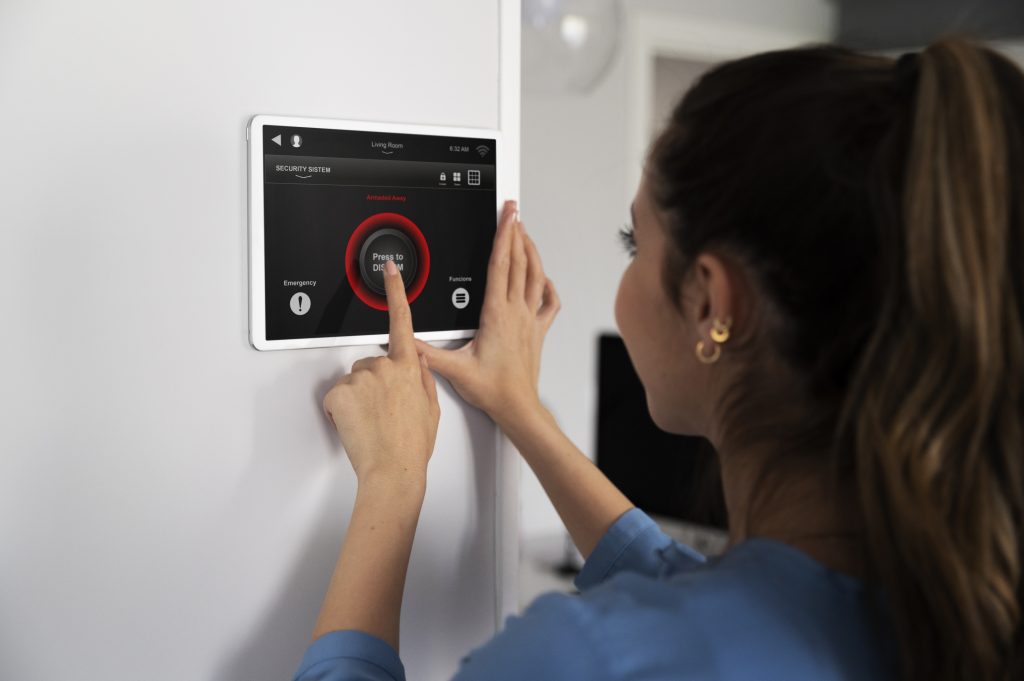
- Smart thermostats
The smart thermostat and the connected home are inextricably linked to energy efficiency in the home. These devices control the heating and cooling equipment, which boast a high fuel propensity. Sitting in the sweet spot between precision and comfort, smart thermostats ensure that a home is neither overly heated nor too cool, saving energy and money. These thermostats learn the habits of a household and its occupants, and accordingly adjust heating and cooling accordingly, for example, reducing it when no one’s home and bringing it back to a comfortable level by the time people return home. Optimising heating, ventilation and air conditioning (HVAC) operations delivers the lion’s share of energy savings in homes.
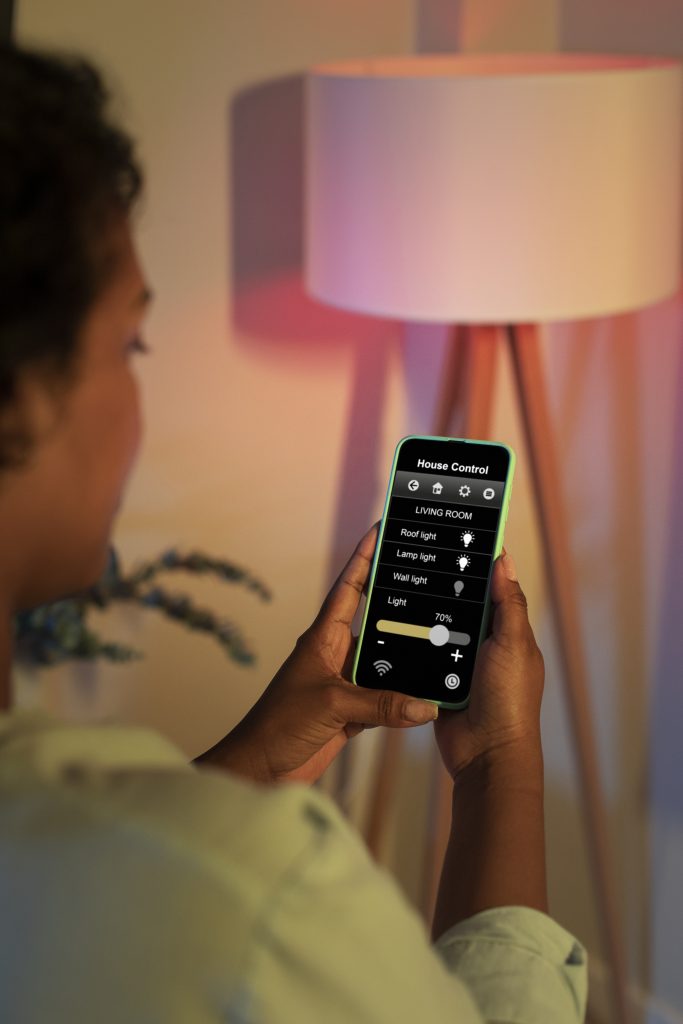
- LED lighting and smart light controls
Without a doubt, LED lighting is one of the pillars of energy-reducing lighting technologies. If compared with a conventional incandescent bulb, LED bulbs utilise at least 75% less energy. While the introduction of LED lights already saves a significant amount of energy, when combined with smart light controls, such as automated dimmers, motion sensors and programmable schedules, these products contribute to even greater energy savings. Dimmers reduce light usage at times when lighting may not be needed; motion sensors turn lights on when people are present and turn them off when spaces are empty; and programmable schedules ensure lights are automatically shut off at times when no one is using the space.
According to global technology intelligence firm ABI Research, 138 million smart light components, which include luminaires, sensors, controllers, and switches, will be shipped in 2030 and installed in smart buildings.
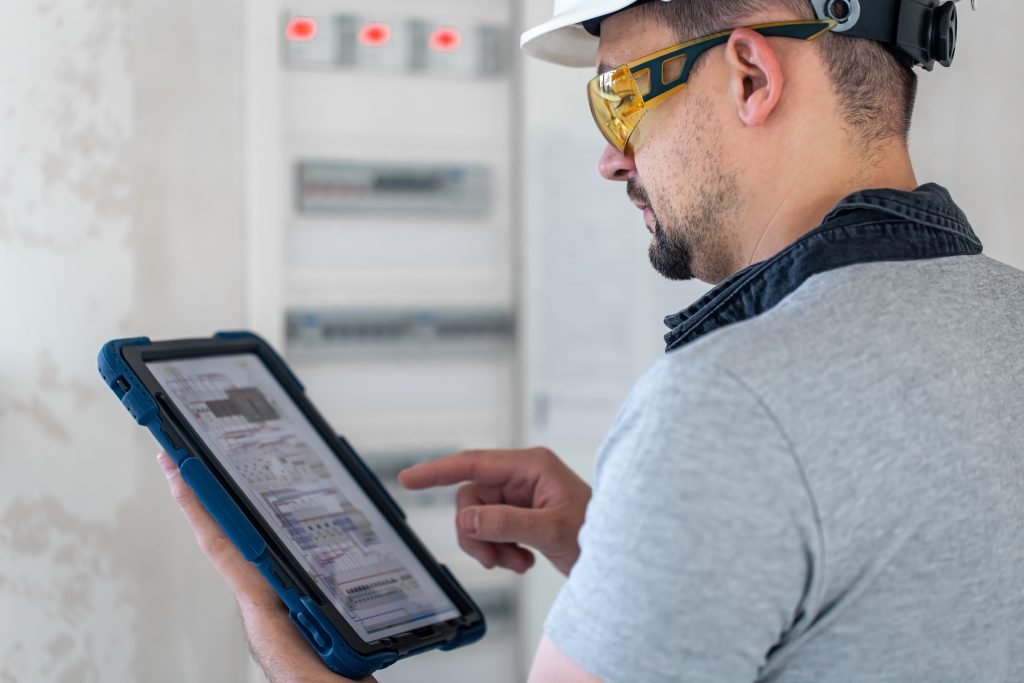
- Energy monitoring systems
Energy-monitoring systems are allowing owners to get a big picture of their home’s energy use. In real-time, they show where energy is being consumed and when it is being wasted. They can even show whether an appliance is using a large amount of energy. This means people can make informed choices over how they use energy and what steps to take in order to waste less.
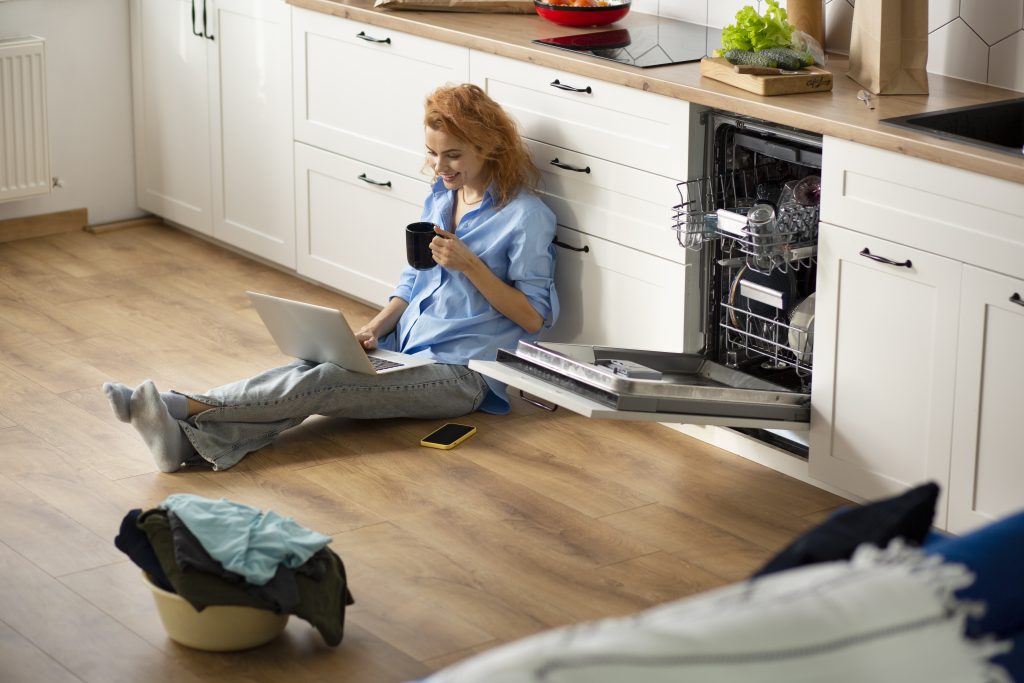
- Smart appliances and plugs
Smart fridges, washing machines and dishwashers provide the best energy use possible without impacting performance. They can be controlled by a user to run at off-peak times when energy rates are low or when there are times when there is a high presence of renewable energy in the grid. Similar opportunities exist for non-smart appliances through smart plugs that provide remote control and scheduling ability to turn off appliances when not in use, thus saving power.
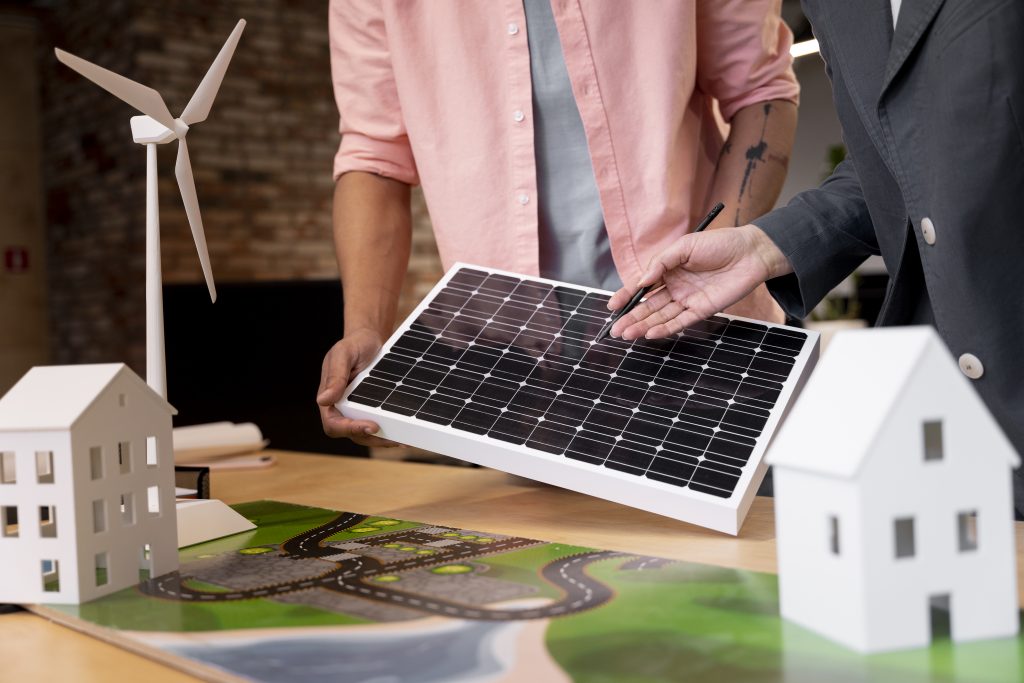
- Renewable energy integration
Adding renewable energy sources to a smart home improves its efficiency and sustainability greatly. The use of solar panels produces clean, green electricity that can be used to run the home. In some cases it might be possible to swap the electricity generated back into the grid and receive money for it. It is also possible to have batteries that can receive the energy being generated by the solar panels. This allows you to have a steady stream of green energy coming into the house, rather than using other forms of energy that aren’t renewable like fossil fuels. The use of energy can be managed by the smart system and use the best electricity types available at the time, which in the examples mentioned earlier – would be the electricity generated by the solar system and recycled back from the batteries.
These components, when combined, constitute the building blocks of a smart, energy-efficient home. As smart home technology improves, energy savings and environmental benefits will only increase exponentially. And we will have set ourselves on the path for a greener world.
Real-world examples and success stories
Despite the number of specific case studies with the relevant figures always increasing, some of them certainly highlight the impact of smart home technologies on energy efficiency and, consequently, on sustainability in a way that is both quantifiable and exemplary.
One of the most often held up as a certifiable smart home energy efficiency triumph is the adoption of smart thermostats by Nest, which has written in its whitepaper that early users were cutting 10-12% off heating, and 15% off cooling, per year – estimated average savings of about US$131 to US$145 per home. That cuts energy use in half; heating and cooling account for about half of a home’s energy use.
Another example is a survey on energy efficiency in smart homes that highlights how Europe’s adoption of smart grids, integrating novel information and communication technologies like sensors and high-performance digital communication systems, has redefined energy distribution. These technologies enable precise, real-time measurement and monitoring of energy parameters and facilitate remote operation and optimisation of distribution. The transformation to smart grids has introduced the concept of prosumers—users who both produce and consume energy. By using big data with advanced analytics and semantic technologies, these smart environments aim to enhance energy efficiency significantly. Challenges such as information security remain, but the push towards microgrids and data-driven solutions promises a future where smart homes can efficiently manage and reduce energy consumption.
Impact statistics and figures
- Energy savings:
- Smart lighting has the potential to save 7–27% of a home’s lighting energy use
- Because household plug loads can theoretically include an almost infinite number of electronics and electric devices, the potential for plug load energy savings is substantial—up to 50% in some households
- Smart appliances can reduce energy costs for a typical household by 2–9%
- Smart heating, ventilation and air-conditioning (HVAC) systems can save up to 10% of energy
- Reduction in carbon footprint: a study from Finnish researchers concluded that home automation saves 12.78% of original emissions
- Utility bill reduction: Homeowners utilising smart thermostats and energy monitoring systems often see a reduction in utility bills ranging from 5% to 22%
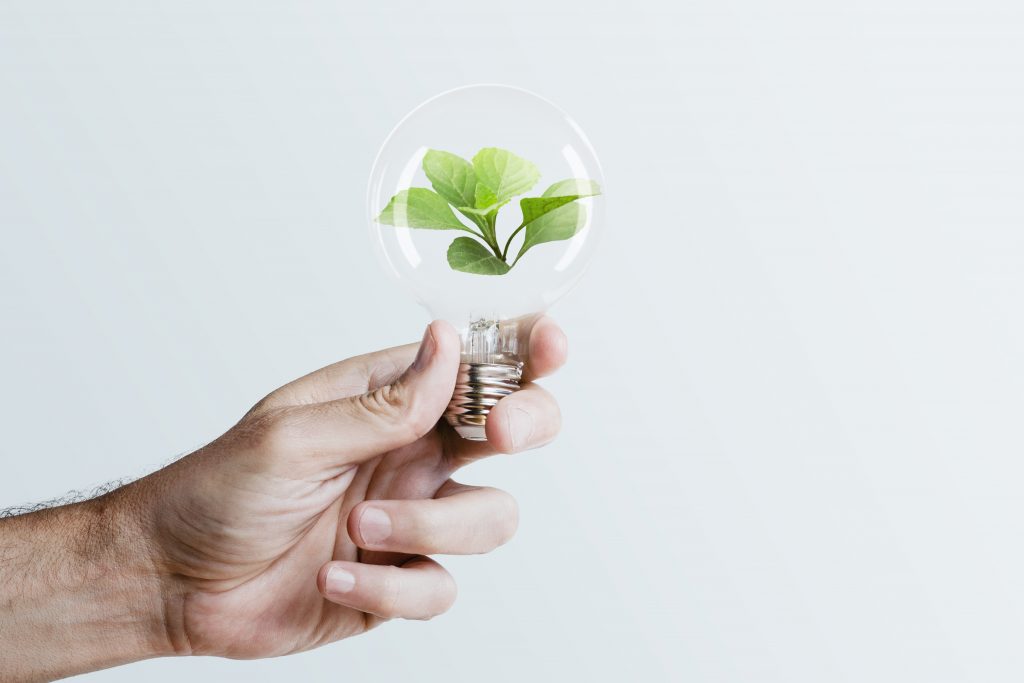
Challenges and considerations
Adopting smart home technology brings numerous benefits in terms of energy efficiency and convenience, yet it also introduces several challenges and considerations for homeowners:
- Financial outlay: The upfront costs involved in acquiring and installation of smart home devices can be significant. Often, high-end smart thermostats, lighting systems, security devices, and other IoT (Internet of Things) equipment tend to be expensive, averaging at around US$1,000-3,500. But certain smart home appliances can cost up to US$10,000, such as a smart fridge.
- Return on investment (ROI): While smart home tech has the potential to save energy, leading to potentially lower utility bills over the long term, it will take years for some homeowners to recover their initial investment. Long-term savings versus cost of installation.
- Data privacy: Smart home devices will monitor and transmit user data, such as patterns of operation. The methods of use of this data and who can have access to it raises privacy concerns. Understanding the privacy policies and data handling practices of device manufacturers and service providers is therefore essential.
- Security vulnerabilities: IoT devices are susceptible to hackers and cyberattack, which could compromise personal information, or even allow someone into your home. Devices should be secure and regularly updated, with passwords kept secure.
- Ecosystem fragmentation: The smart home market encompasses many manufacturers and platforms, some devices might not work properly with each other, potentially leading to degraded functionality and experience.
Depending on the user’s resources and determination, these challenges might not be enough to outweigh the benefits of integrating smart home technology, especially if one researches the system well, buys from brands with a good reputation for security and privacy, and lays a foundation for a scalable system. While tackling the impediments which come with integrating smart home technology and the gadgets that are tied to the system might seem daunting at first, in the long run the advantages of creating an energy-efficient, convenient and well-connected home environment can outweigh the initial challenges of installing and maintaining smart appliances.

When it comes to climate change and sustainability, a crucial step towards using less energy without making our everyday lives less comfortable is enabling smart homes. Starting from the early experiments with home automation, the idea of smart technological homes is becoming more and more elaborate nowadays. Smart homes pair the energy saving possibilities of smart thermostats, LED lights and IoT devices to adjust home energy use properly, reducing electricity consumption and recommending the most energy-efficient appliances. While the adoption of a smart home might be challenging for some in terms of cost and data privacy, the goal of creating a more sustainable planet with smart homes brings many benefits, including energy efficiency, lower emissions, smaller carbon footprint, and better control over a home environment. Smart technology, as it develops and becomes more common, is poised to become an important step towards achieving global environmental targets.
Comment on this article via X: @IoTNow_











